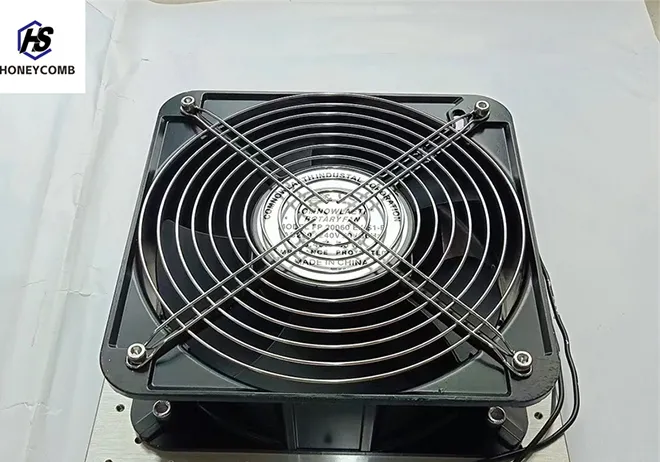
- Afrikaans
- Albanian
- Amharic
- Arabic
- Armenian
- Azerbaijani
- Basque
- Belarusian
- Bengali
- Bosnian
- Bulgarian
- Catalan
- Cebuano
- China
- China (Taiwan)
- Corsican
- Croatian
- Czech
- Danish
- Dutch
- English
- Esperanto
- Estonian
- Finnish
- French
- Frisian
- Galician
- Georgian
- German
- Greek
- Gujarati
- Haitian Creole
- hausa
- hawaiian
- Hebrew
- Hindi
- Miao
- Indonesian
- Italian
- Japanese
- Javanese
- Malay
- Persian
- Portuguese
- Punjabi
- Russian
- Spanish
- Swahili
- Telugu
- Vietnamese

Jan . 23, 2025 01:43
Back to list
honeycomb vents
Honeycomb vents have rapidly carved out a niche within various industries due to their unique structural properties and functional advantages. Their distinctive design not only offers structural integrity but also serves as a practical solution to ventilation challenges in numerous applications.
A real-world example of honeycomb vent application is in the aerospace industry, where they are integrated into aircraft design to mitigate electromagnetic interference while reducing weight and maintaining structural strength. The outstanding performance and reliability of these vents have established them as a trusted choice within the aviation sector. For businesses considering honeycomb vents, selecting the right manufacturer is crucial. Reputable manufacturers are distinguished by their adherence to stringent quality control measures, ensuring only the best materials and craftsmanship go into each product. Companies with extensive experience in producing honeycomb vents often offer customization options tailored to specific industry needs, providing an added layer of adaptability and expertise. As with any innovative technology, the effectiveness of honeycomb vents is amplified when installed and maintained correctly. Therefore, consulting with experts for the installation process and conducting regular maintenance checks are essential steps to maximize their benefits. In conclusion, honeycomb vents are not a mere passing trend but represent a sophisticated and effective solution across a variety of industries. Their ability to handle diverse functions, from thermal management to sound attenuation and EMI protection, underscores their utility and adaptability. By capitalizing on the unique properties of the honeycomb structure, industries can achieve greater efficiency, safety, and reliability in their operations. Leveraging honeycomb vents can lead to significant advancements in product design and operational efficiency. Embracing this technology can position a company as a forward-thinking leader in innovation and environmental responsibility, particularly in sectors where precision engineering is a key component of success.


A real-world example of honeycomb vent application is in the aerospace industry, where they are integrated into aircraft design to mitigate electromagnetic interference while reducing weight and maintaining structural strength. The outstanding performance and reliability of these vents have established them as a trusted choice within the aviation sector. For businesses considering honeycomb vents, selecting the right manufacturer is crucial. Reputable manufacturers are distinguished by their adherence to stringent quality control measures, ensuring only the best materials and craftsmanship go into each product. Companies with extensive experience in producing honeycomb vents often offer customization options tailored to specific industry needs, providing an added layer of adaptability and expertise. As with any innovative technology, the effectiveness of honeycomb vents is amplified when installed and maintained correctly. Therefore, consulting with experts for the installation process and conducting regular maintenance checks are essential steps to maximize their benefits. In conclusion, honeycomb vents are not a mere passing trend but represent a sophisticated and effective solution across a variety of industries. Their ability to handle diverse functions, from thermal management to sound attenuation and EMI protection, underscores their utility and adaptability. By capitalizing on the unique properties of the honeycomb structure, industries can achieve greater efficiency, safety, and reliability in their operations. Leveraging honeycomb vents can lead to significant advancements in product design and operational efficiency. Embracing this technology can position a company as a forward-thinking leader in innovation and environmental responsibility, particularly in sectors where precision engineering is a key component of success.
Prev:
Next:
Products categories
Latest news
-
Why Vented Aluminum Honeycomb Is Leading the Way in Shielding and Ventilation SolutionsNewsJul.18,2025
-
Why Stainless Steel Honeycomb Panel is the Ultimate Choice for High-Tech Shielding and ProtectionNewsJul.18,2025
-
Why Honeycomb Strips Are Revolutionizing High-Speed Sealing SolutionsNewsJul.18,2025
-
Shielded Glass Innovation Powers the Future of Electromagnetic ProtectionNewsJul.18,2025
-
Precision Starts Here: Revolutionizing Airflow Control with Honeycomb Wind Tunnel SolutionsNewsJul.18,2025
-
Elevate Industrial Performance with Precision-Engineered Steel Honeycomb Core SolutionsNewsJul.18,2025
-
Vented Aluminum Honeycomb: A Smart Shield for Airflow and EMI ControlNewsJul.11,2025















